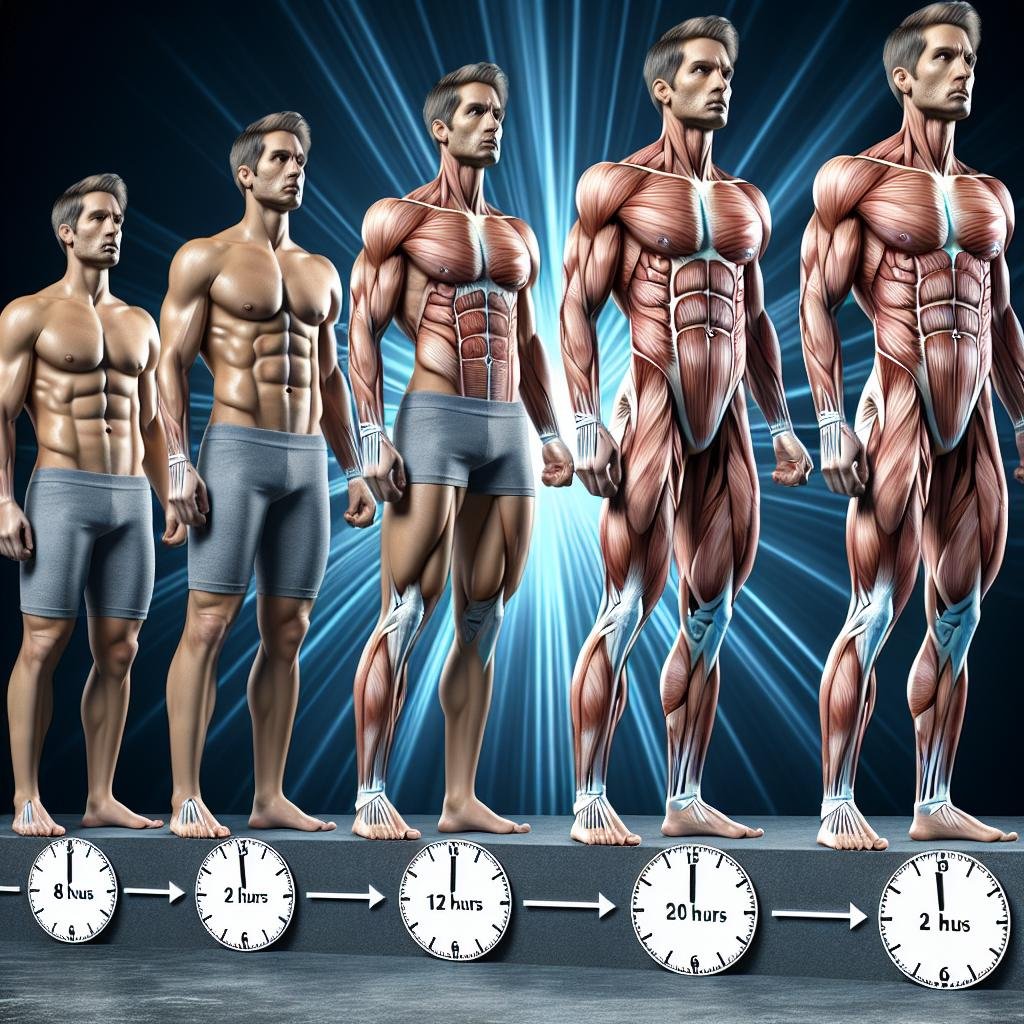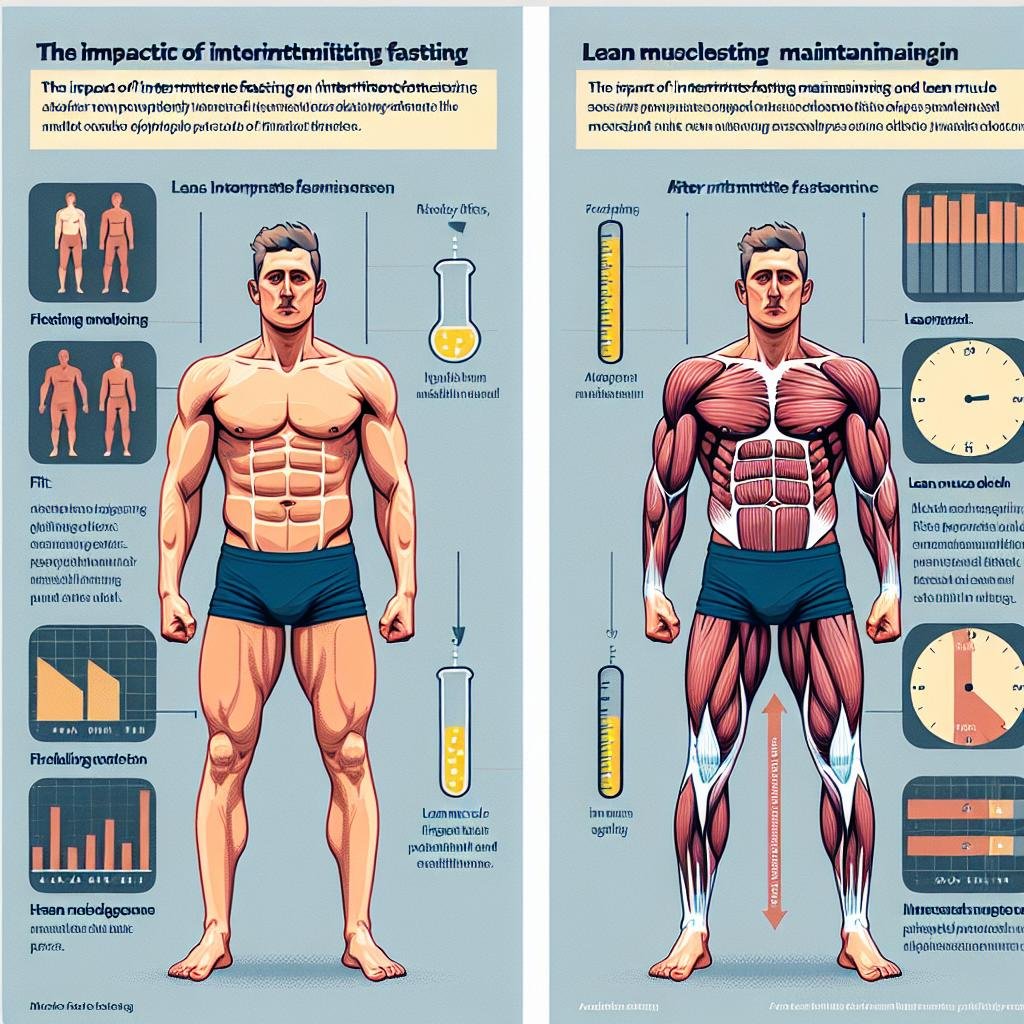In recent years, intermittent fasting (IF) has surged in popularity as a dietary approach, capturing the attention of health enthusiasts, athletes, and researchers alike. While often touted for its potential benefits in weight loss and metabolic health, there remains a crucial question that lingers beneath the surface: How does intermittent fasting affect lean muscle maintenance and growth? As more individuals explore fasting windows, curtailing their meal times and altering their macronutrient intake, understanding the implications of these practices on muscle physiology becomes increasingly important. This article delves into the intricate relationship between intermittent fasting and muscle health, examining the mechanisms at play, the latest scientific research, and practical insights for those looking to harness the benefits of fasting without sacrificing their hard-earned muscle. Join us as we unravel the complexities of this dietary phenomenon and its role in fostering a balanced approach to fitness and nutrition.
Understanding Intermittent Fasting and Its Mechanisms for Muscle Preservation
Intermittent fasting (IF) operates on a simple premise: alternating periods of eating and fasting can promote beneficial metabolic changes. One of the most intriguing aspects of IF is its influence on muscle preservation, even when caloric intake is reduced. This dietary approach encourages the body to utilize fat stores for energy, while simultaneously enhancing the efficiency of muscle protein synthesis. During fasting periods, levels of human growth hormone (HGH) significantly increase, fostering a muscle-preserving environment that combats the catabolic effects typically associated with calorie restriction.
Furthermore, the timing of nutrient intake plays a crucial role in maximizing muscle retention during IF. It is essential to consume an adequate amount of high-quality protein during the feeding windows to support muscle repair and growth. A strategic focus on nutrient timing can optimize anabolic signaling and stave off muscle breakdown. Below are key factors that contribute to muscle maintenance under intermittent fasting:
- Hormonal Adaptations: Elevated growth hormone and testosterone levels.
- Improved Insulin Sensitivity: Enhanced nutrient uptake by muscle cells.
- Fat Utilization: Increased fat oxidation while preserving glycogen stores.
To illustrate the effects of intermittent fasting on muscle maintenance, consider the comparative benefits outlined in the table below:
| Fasting Period | Key Benefits | Muscle Preservation Mechanisms |
|---|---|---|
| 16:8 | Improved metabolic health | Increased HGH levels |
| 18:6 | Enhanced fat loss | Fat oxidation |
| 20:4 | Higher insulin sensitivity | Better nutrient absorption post-fast |

Nutritional Strategies to Optimize Lean Muscle Growth During Fasting Cycles
Successfully navigating fasting cycles while promoting lean muscle growth requires a strategic approach to nutrition. Prioritizing protein intake during feeding windows is vital, as it plays a central role in muscle repair and growth. Consider the following strategies to maximize your muscle synthesis:
- Consume quality protein sources: Aim for lean meats, fish, eggs, and plant-based proteins such as legumes and quinoa.
- Implement timed protein feeding: Include protein-rich meals or snacks directly after your workouts to take advantage of the anabolic window.
- Hydrate adequately: Water is crucial, but incorporating electrolytes can further support muscle function and recovery.
- Incorporate resistance training: Regular strength exercises combined with your nutritional strategies amplify muscle growth even during fasting.
Another essential aspect is meal composition and nutrient timing. Consider structuring your meals to include macronutrients** that support muscle growth and recovery. The following table outlines effective post-fasting meal components:
| Food Group | Examples | Benefits |
|---|---|---|
| Protein | Chicken, Greek yogurt, protein powder | Supports muscle recovery and growth |
| Carbohydrates | Brown rice, sweet potatoes, oats | Replenishes glycogen stores |
| Fats | Nuts, avocado, olive oil | Provides sustained energy and essential fatty acids |
By blending these nutritional strategies into your fasting cycles, you’ll create a conducive environment for lean muscle growth while maximizing the benefits of intermittent fasting.

Timing and Frequency: Tailoring Your Fasting Schedule for Maximum Gains
When it comes to intermittent fasting, the timing and frequency of your eating windows can significantly influence your results. Understanding your body’s rhythms and how they align with your workout schedule is crucial for maximizing muscle maintenance and growth. Here are a few factors to consider when tailoring your fasting schedule:
- Training Time: Consider fasting during periods when you are less likely to be working out. For many, this means training in a fasted state to enhance fat utilization while preserving muscle.
- Feeding Window: Aim for a feeding window that allows ample time to consume the necessary calories and nutrients. Common windows include:
Window Hours Common Practices 16/8 8 hours eating, 16 hours fasting Popular among athletes for muscle maintenance 20/4 4 hours eating, 20 hours fasting Suitable for those looking to minimize intake while maintaining protein sufficiently - Individual Response: Everyone’s body reacts differently to fasting methods; monitor your energy levels and recovery times, and adjust your schedule as necessary.
Integration of appropriate supplementation during your feeding window can further enhance the benefits of intermittent fasting. Focus on high-quality protein sources and nutrient-dense foods to ensure your body has the fuel it requires for recovery and muscle growth. Keep an eye on meal timing around workouts, as consuming a balanced meal post-training is essential for refueling and promoting hypertrophy. By experimenting with different patterns and customizing your approach, you can unlock greater potential for both muscle maintenance and growth.

Practical Tips for Balancing Muscle Maintenance and Intermittent Fasting
To effectively balance muscle maintenance while practicing intermittent fasting, timing your workouts around your eating windows can make a significant difference. Training during your eating period ensures that you can refuel your body with the necessary nutrients for muscle repair and growth shortly after your workout. Additionally, consider incorporating high-quality protein sources and nutrient-dense meals during feeding times to support muscle synthesis. Here are some strategies:
- Optimize Protein Intake: Aim for 1.6 to 2.2 grams of protein per kilogram of body weight. Spread this intake over your meals.
- Stay Hydrated: Proper hydration is crucial, especially during fasting. Aim to drink plenty of water during both fasting and feeding periods.
- Include Resistance Training: Focus on strength training exercises at least 3-4 times a week to signal your body to maintain muscle mass.
Moreover, tracking your body’s response to intermittent fasting can help identify trends in muscle loss or gains. Keeping a simple log of your weight, strength levels, and overall energy can yield valuable insights into whether your fasting routine is supporting muscle maintenance. If you’re noticing adverse effects, consider adjusting your fasting window or the types of workouts you’re doing. A supportive eating strategy may include:
| Meal Type | Suggested Foods |
|---|---|
| Pre-Workout | Oatmeal with protein powder, Greek yogurt |
| Post-Workout | Grilled chicken with quinoa, protein smoothie |
The Way Forward
the journey through the landscape of intermittent fasting reveals a nuanced picture for those aiming to maintain and grow lean muscle. As we’ve explored, this eating pattern offers both challenges and opportunities, influencing not only the body’s energy systems but also the intricate balance of hormones that govern muscle maintenance and growth. While some studies suggest that fasting may lead to muscle preservation in specific contexts, others raise caution about potential drawbacks, particularly when adequate protein intake and timing are neglected.
As with any nutritional strategy, individuality plays a crucial role. Factors like age, physical activity level, and overall dietary habits can all sway the outcomes of intermittent fasting. Ultimately, for those considering this approach, it may prove beneficial to tailor their fasting protocols to align with personal goals and health needs. Listening to one’s body is essential in determining what works best in the quest for strength and vitality.
As science continues to unearth the multifaceted effects of intermittent fasting, one thing remains clear: understanding the complexities of our body’s response to food—and fasting—will be fundamental in our strive for optimal health. Embracing a balanced view, enriched by personal experimentation and informed by the latest research, can guide us toward achieving our fitness aspirations while fostering a sustainable lifestyle.

